 Lou Leto
.
June 02, 2023
.
All Feature Vehicles
Lou Leto
.
June 02, 2023
.
All Feature Vehicles
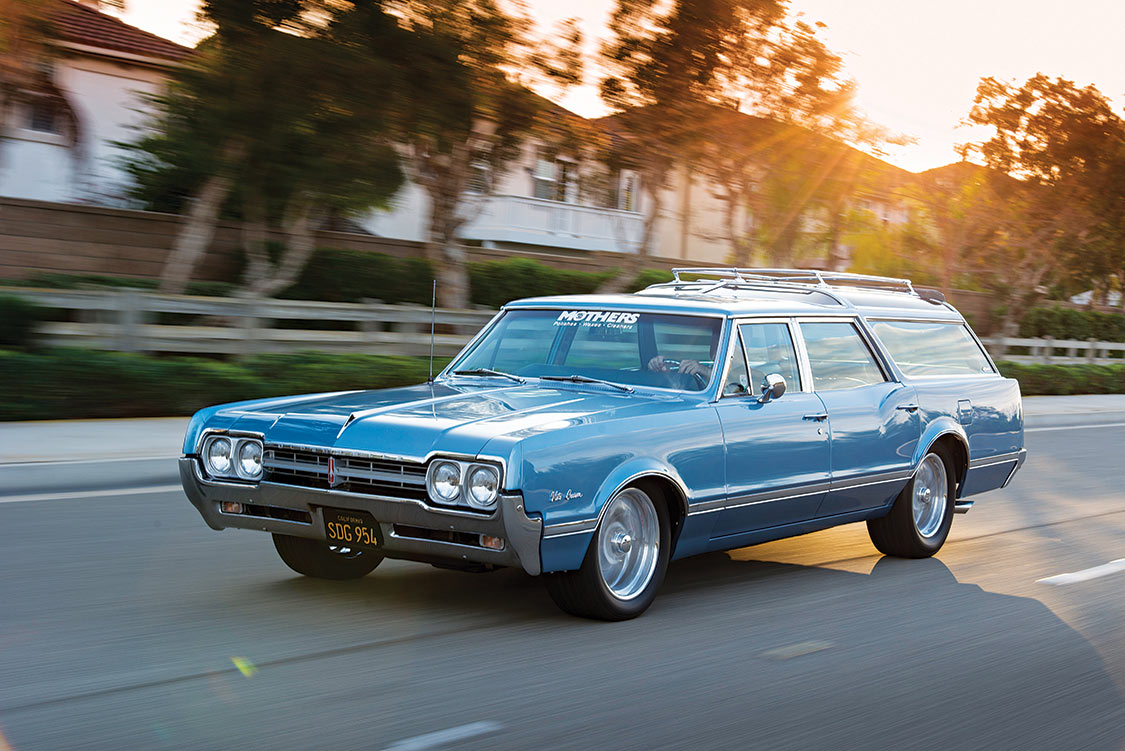
Oldsmobile is another of the divisions that GM abruptly sacrificed. That’s a pity, as the loyal followers of the Olds brand were twofold. There were those who preferred the luxurious appointments and the smooth ride that Oldsmobile models offered, but who did not wish to flaunt their choice by showing it through buying its Cadillac cousin. The other group was the performance crowd that first gravitated to Oldsmobile when it offered the overhead valve V-8 engine after WWII. One of the very first rock ’n’ roll songs was written about that engine when Jackie Brenston and his Delta Cats recorded “Rocket 88.” The song was later covered by Bill Haley.
He is a true Oldsmobile fan, bitten by the Olds loyalty early on, since his first driving impression was in the family 1966 Oldsmobile Cutlass.
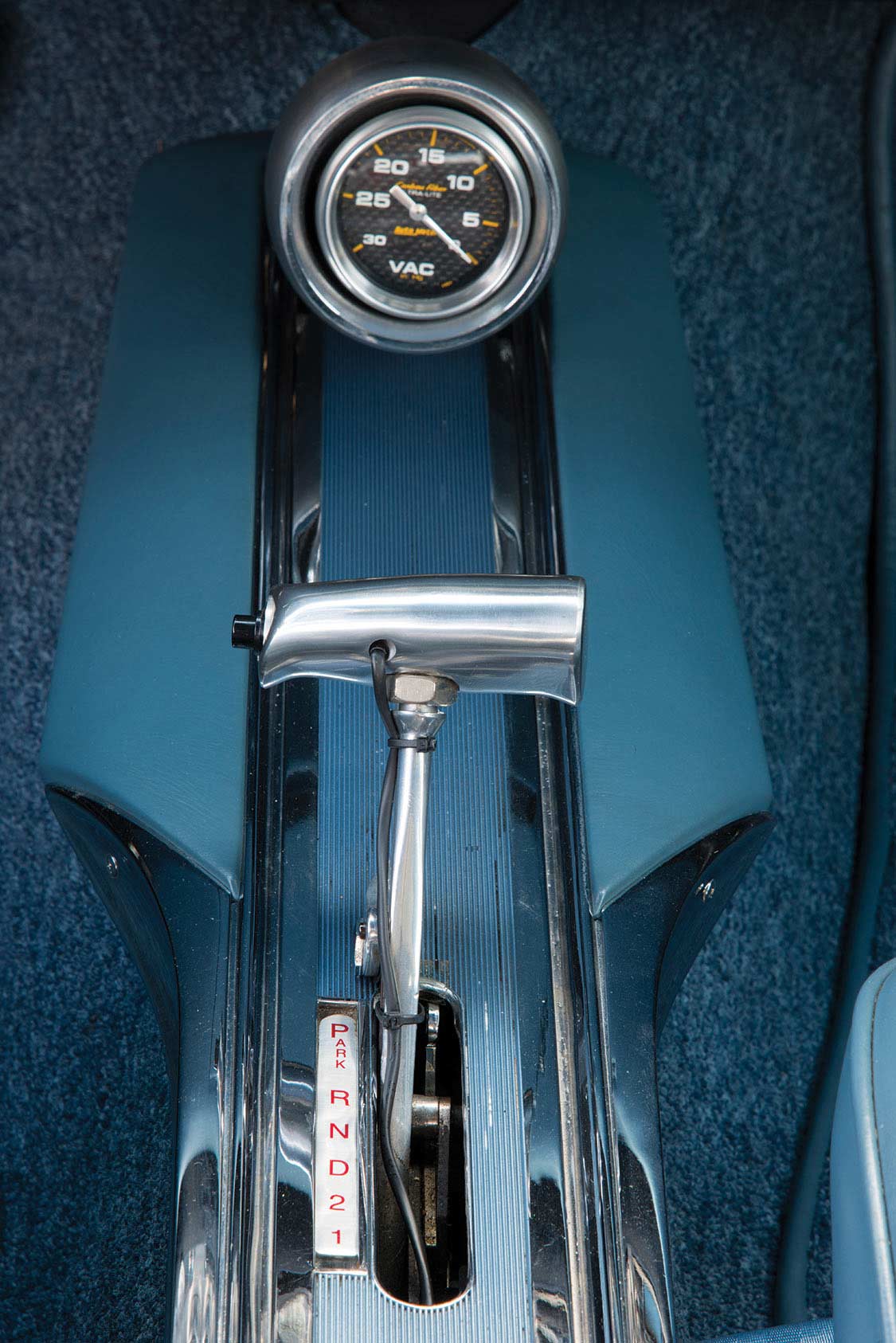
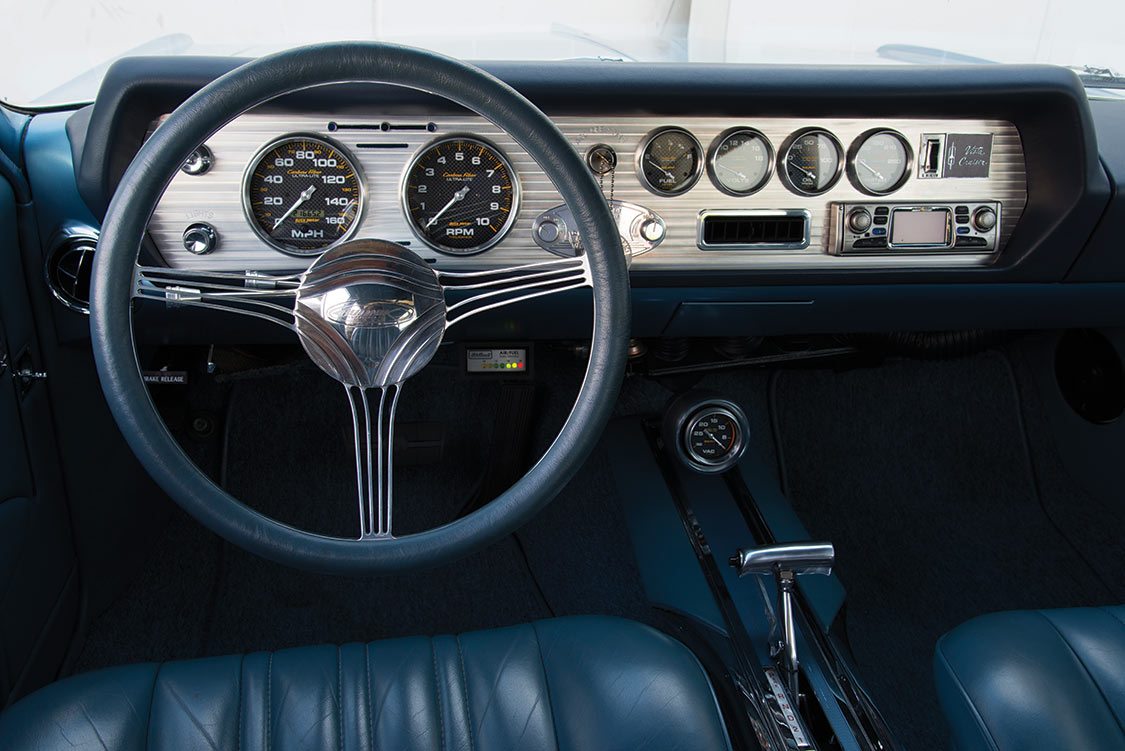
Performance buffs supported Oldsmobile offerings through the 1950s, when multi-carburetion was offered on the sportier models. Hot-rodders quickly learned that the Olds rear end was the strongest to bolt up to their modified cars of any nameplate, and the Hydramatic was the transmission of choice in the Gasser wars at the drag races. When the 1960s muscle car era started evolving, it was Oldsmobile out front early, with the 442 designation, when it actually described the vehicle’s content: 4-barrel carb, 4-speed, 2 exhausts.
Oldsmobile continued with vehicles, upgrades and performance features that have helped create the mystique that lives on; think W-30 cold air packages, 455 big-blocks, Dr. Oldsmobile (Doc Watson), “Gentleman” Joe Schubeck racing the dual-engine Hurst Hairy Olds, and with a little help from George, the Hurst Oldsmobile production models that offered even higher performance models, usually with Linda Vaughn posing nearby.
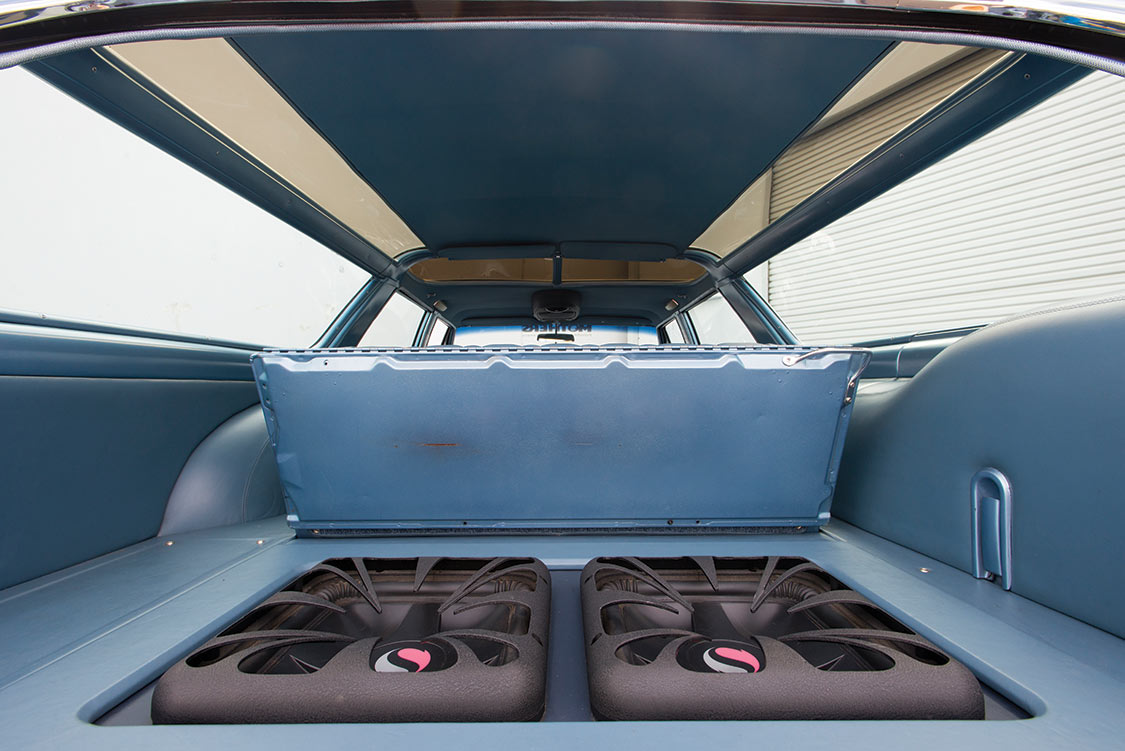
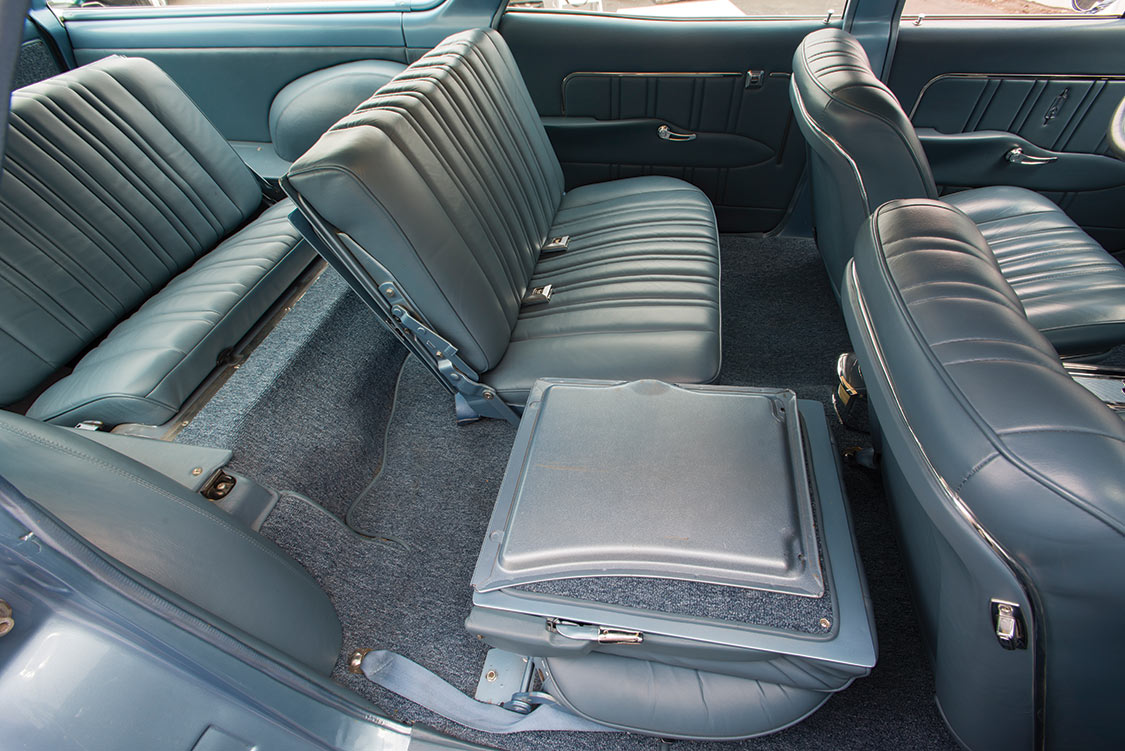
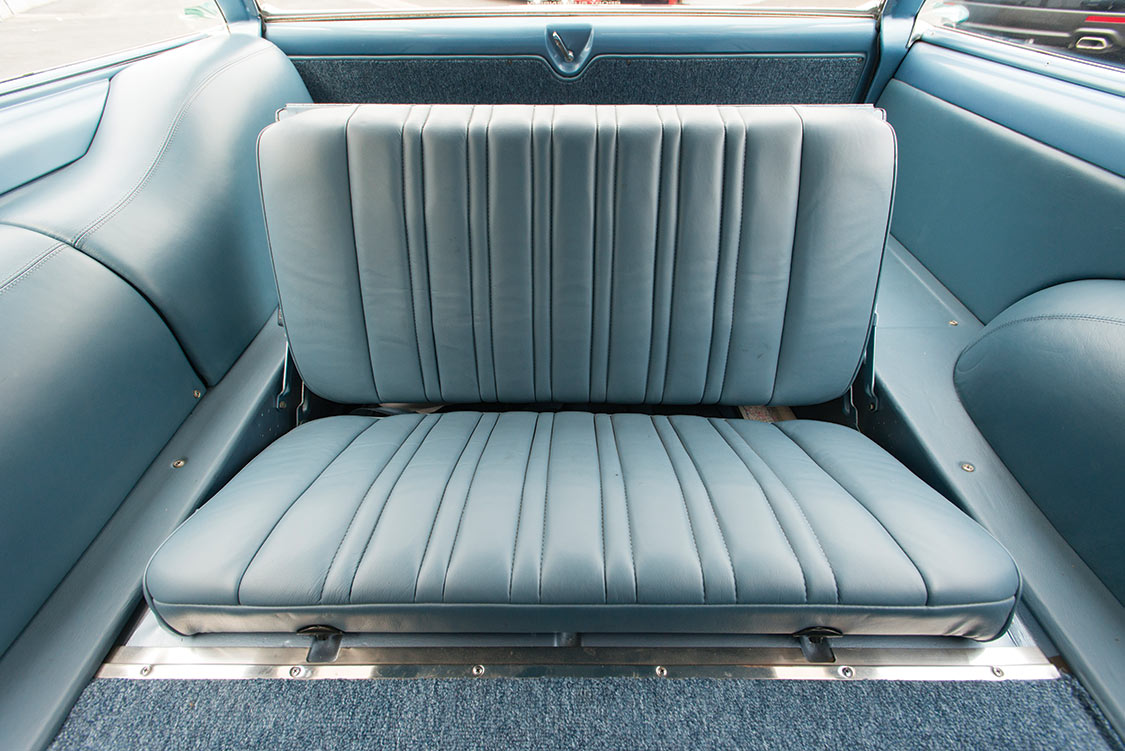
But Oldsmobile didn’t ignore the customer base that enjoyed luxury; with 88 and 98 models, and for those wanting a family hauler, an upgraded Vista Cruiser option for their mid-size F-85 station wagon. The Vista Cruiser offered top-of-the-line amenities; most uniquely, the extra front and side viewing windows on the raised rear portion of the rooftop, recalling the luxury railroad train cars of the mid-20th century. Remember, this was the pre-SUV era. Parents liked that they could have three rows of seats, or when the rear two rows were folded down, 100 cu.-ft. of hauling capacity. Kids in the back seat(s) loved looking up and out of the extra window feature, or flipping the enlarged sun visors mounted halfway back in the roof, to shield the sun from pouring in the forward facing Vista windows.
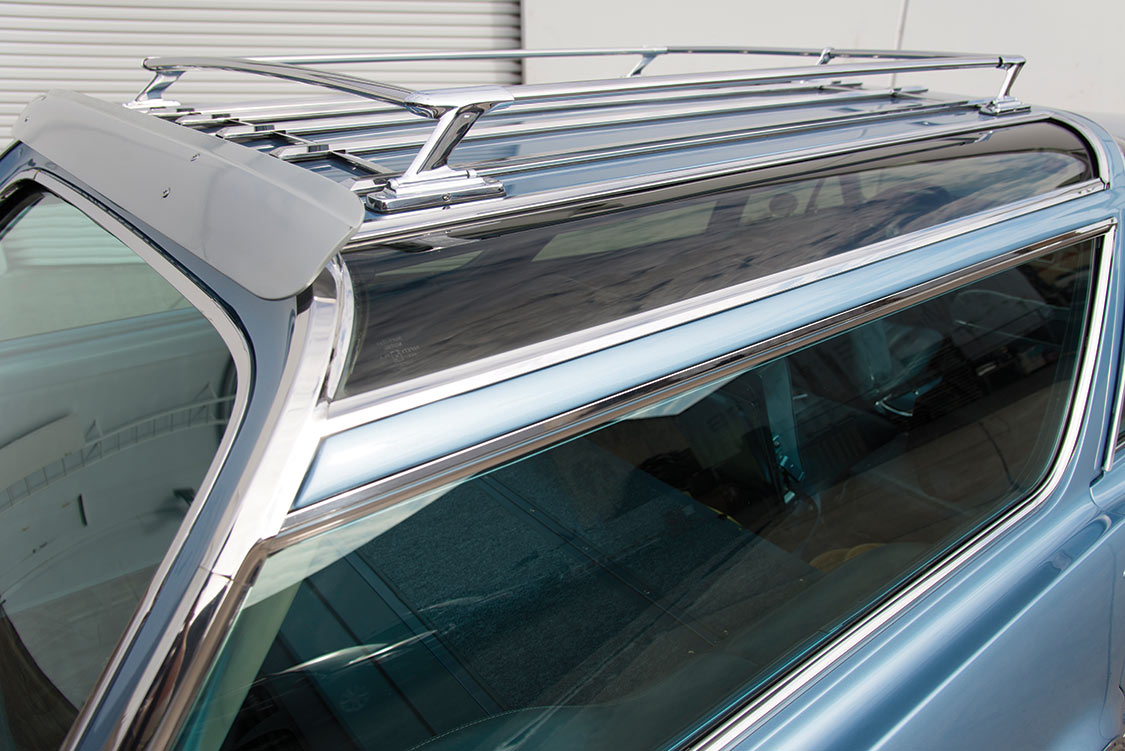
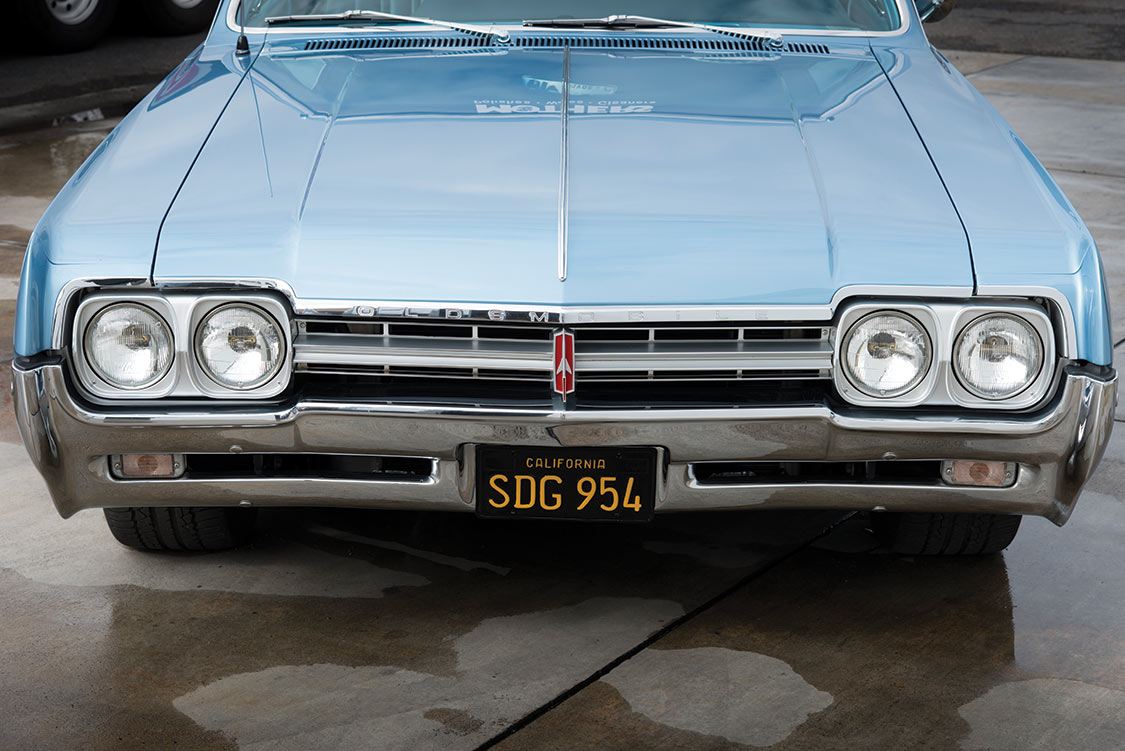
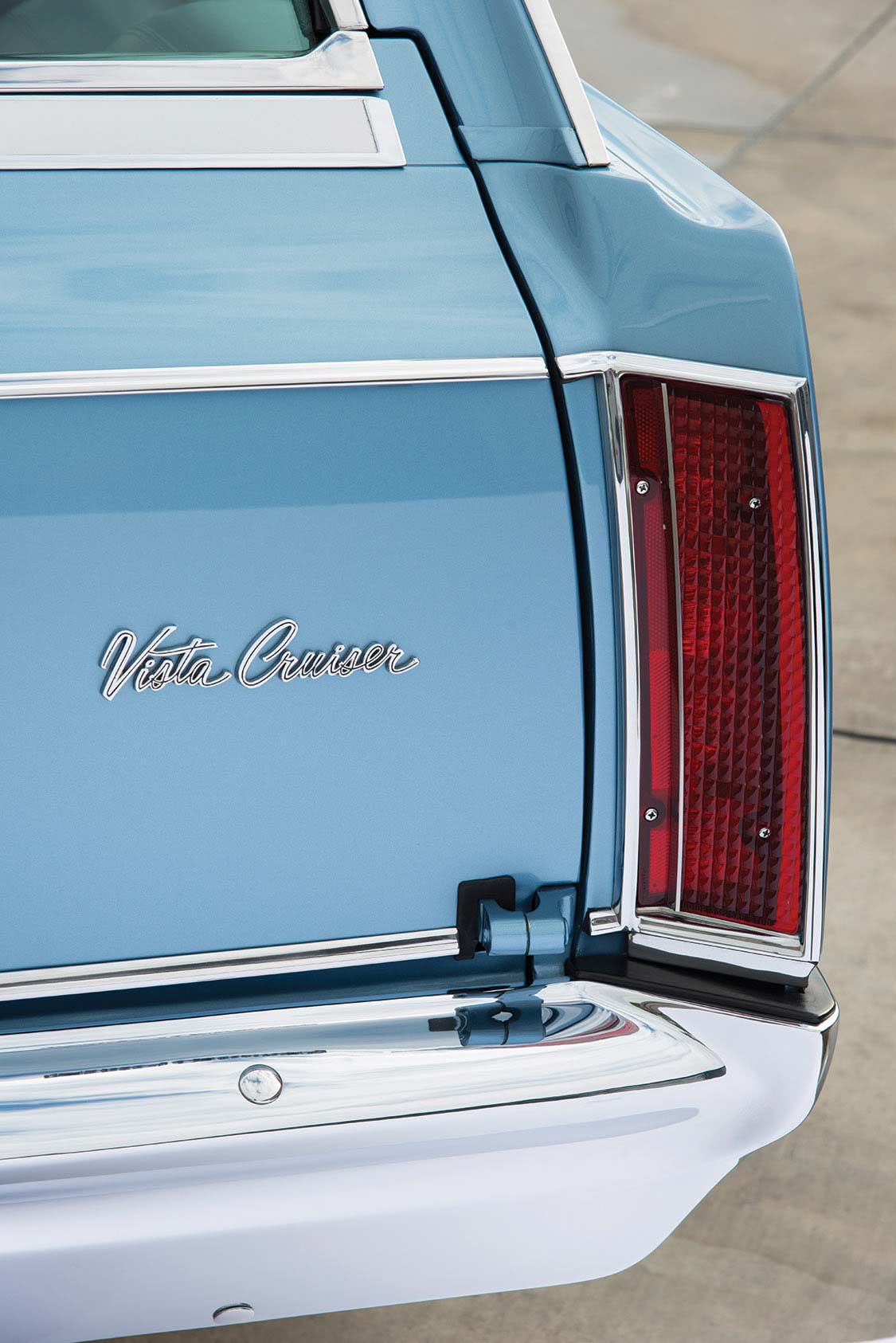
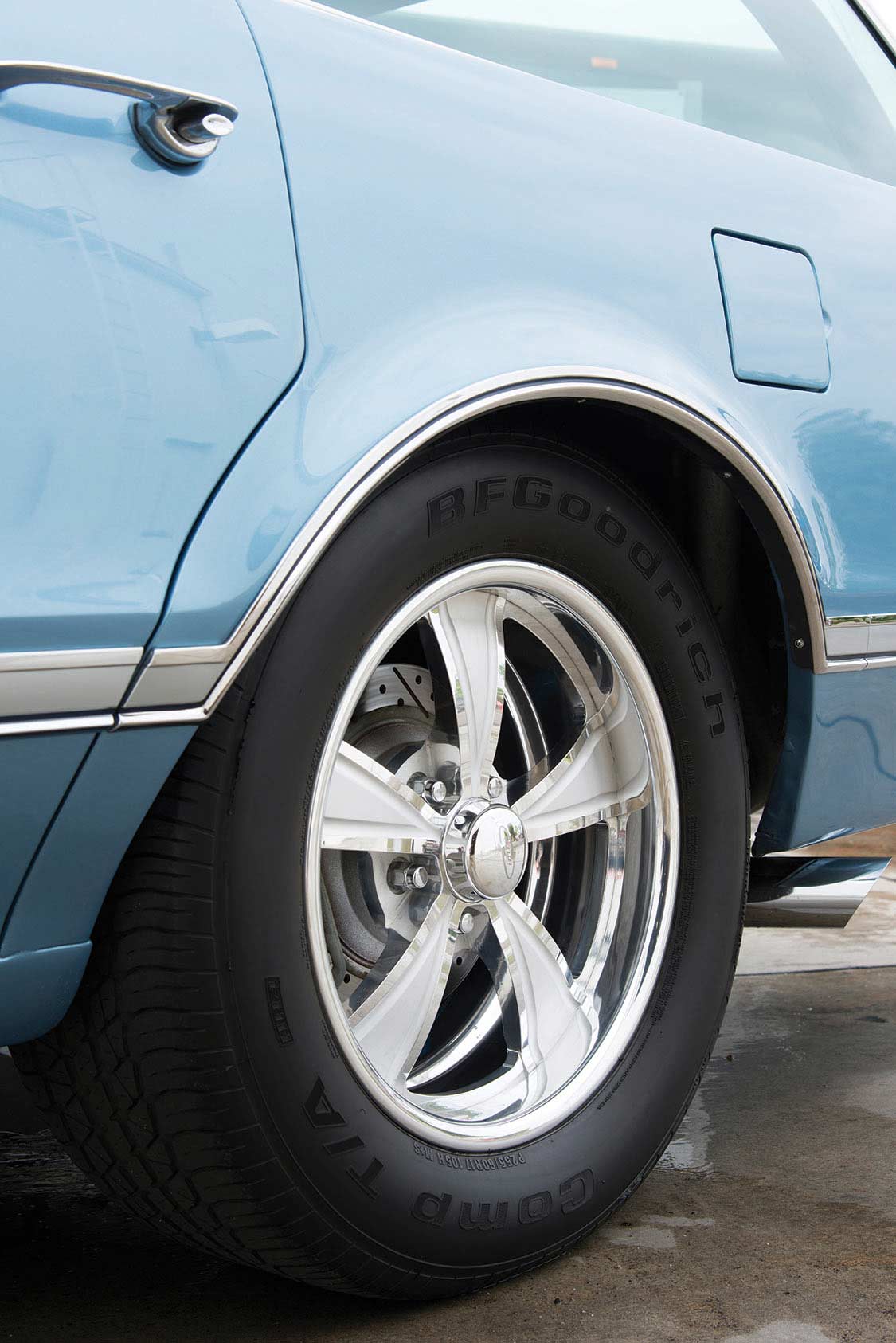
Gary Turnau imagined a visual of using a trick station wagon to tow his drag car to the races. He is a true Oldsmobile fan, bitten by the Olds loyalty early on, since his first driving impression was in the family 1966 Oldsmobile Cutlass. As an adult and a long-time employee for Mother’s Polishes, tasked as their builder of many project cars, he was on the search for another Olds to call his own. Around 1997, he found a 1966 Vista Cruiser advertised in the big Hemmings book. “It had been sold new by a dealer in San Jose, so the sheet metal had survived well. It still had the California black license plate. In its current condition of the tired original color of metallic gold with gold interior, one bad headlight and weak brakes, I made a deal at $1100,” Turnau says. “Just before I drove off in my new purchase, the seller came running out and handed me a stack of papers that included the original window sticker,” he exclaims.
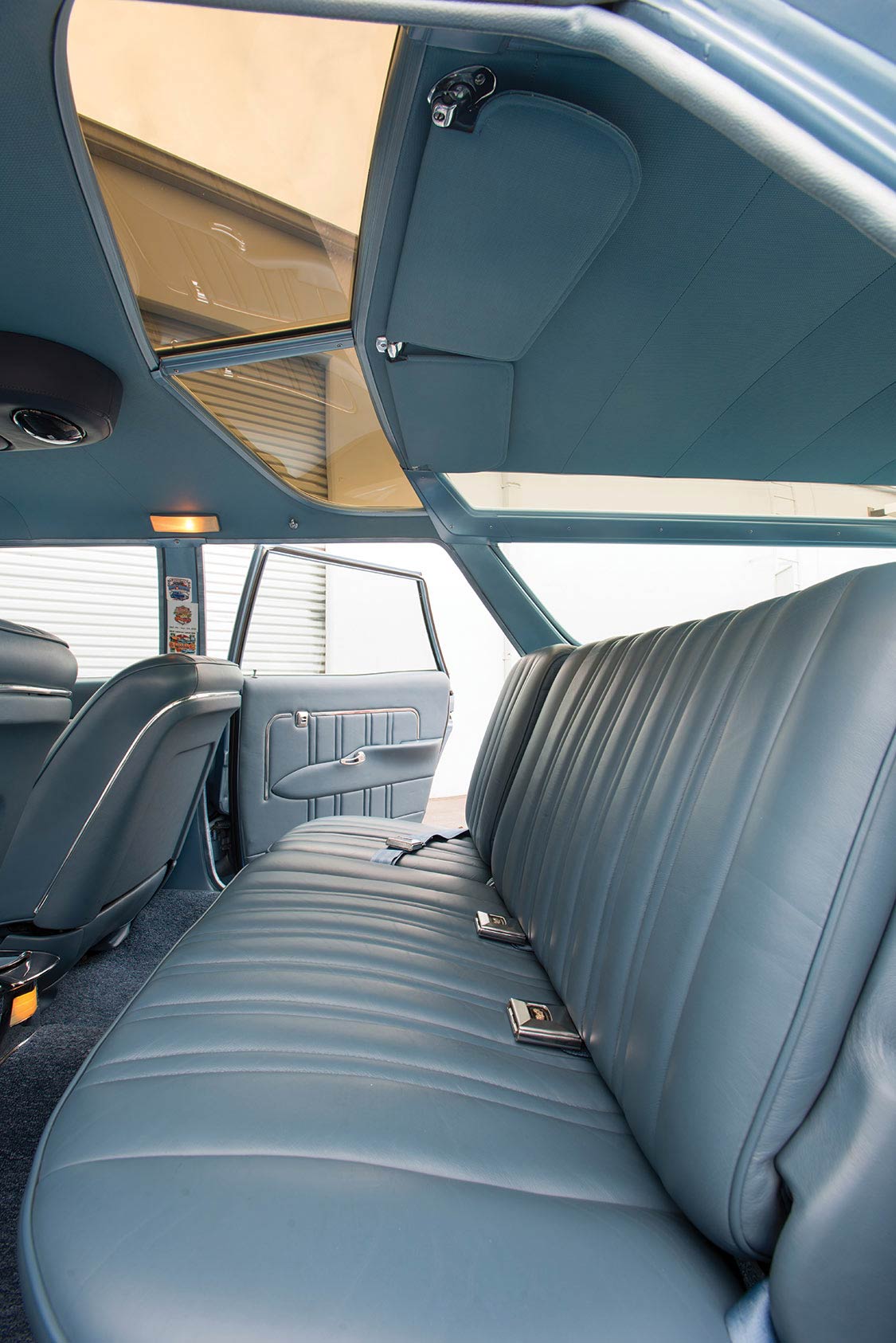
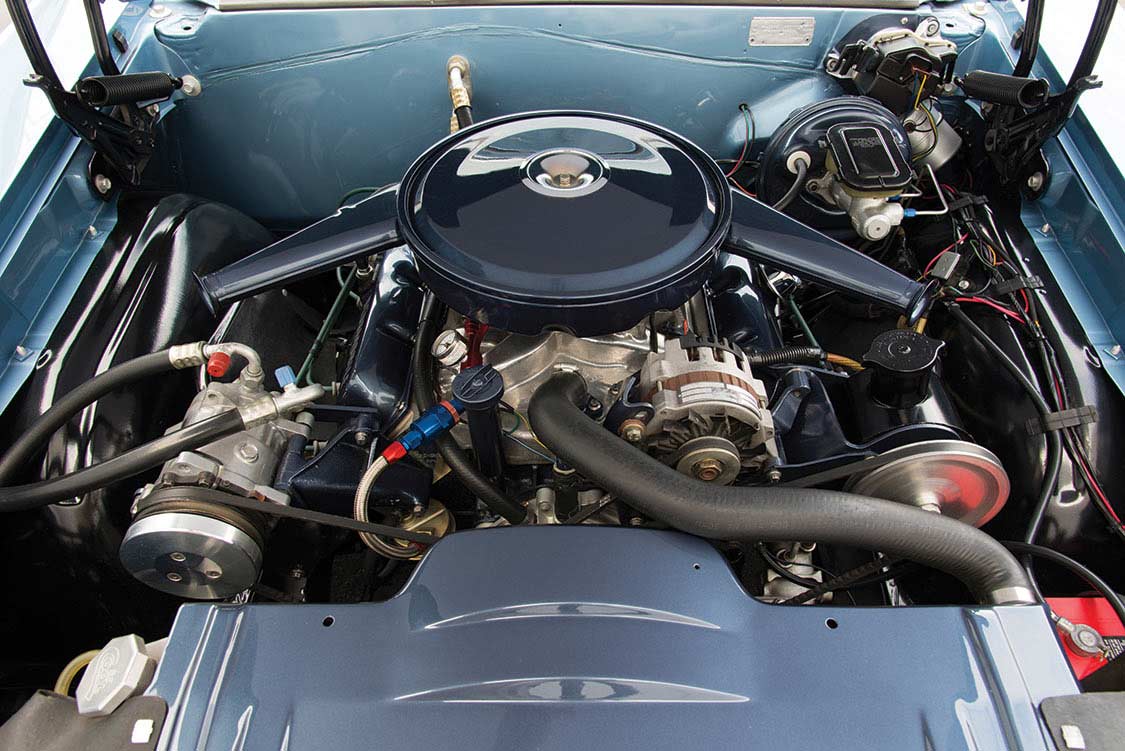
“Other than fixing the headlight and the brakes, it became my hauler during various trips to pick-your-part locations. I even tossed the front fenders for a 442 project in the back,” Turnau says. He started accruing parts for his Vista vision: a combination of a highway cruiser and a boulevard bruiser. “Once started, the build took one year from start to finish,” he says. “Station wagons are the equivalent of two El Caminos.” Part of the time frame recalled is painting the car in February 2000 and getting it on the road in time for an organized long-haul event.
While the body never left the frame, the entire front end was stripped away. He pulled and tossed out the 330-cu.-in. 2-barrel carbureted engine, along with the original transmission. In went a fully modified big-block of 455 cubes, still Oldsmobile in origin, but with ported Edelbrock cylinder heads and their Performer intake manifold. Headers, a stout Comp camshaft, and many other quality performance items were chosen to make it fast, yet last. An Oldsmobile Toronado was the source for the engine bottom and top items: an oil pan for its 1-qt. larger level, along with the dual-snorkel air cleaner that “kept the Olds tradition, offered improved air intake and looked cool,” a satisfied Turnau related. The transmission selected was the Oldsmobile version of the TH400; the Olds unit has a switch-pitch variable stator. And since he takes it on long hauls, he also included a Gear Vendors overdrive unit. The now legendary 12-bolt rear end is GM’s strongest, so Turnau traded an Oldsmobile unit for an upgraded Chevelle version, primarily for its narrower track that allows for wider rear tires. A full complement of Hotchkis components filled the front suspension to make it handle turns better, while discs with 13-in. front and 12-in. rear rotors were selected from Baer brakes to stop the wagon.
Not content to create a warehouse wagon, Turnau has logged the miles in his Vista Cruiser. It has seen the highways and byways from Mt. Clemens, Michigan, to San Bernardino, California.
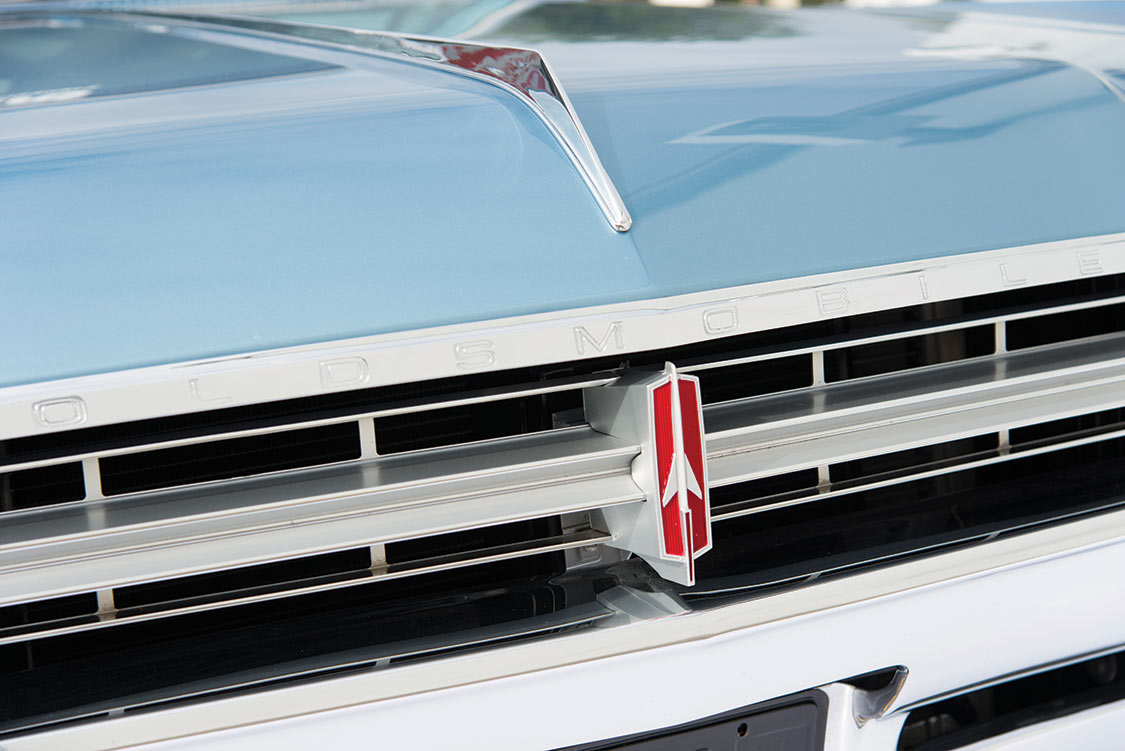
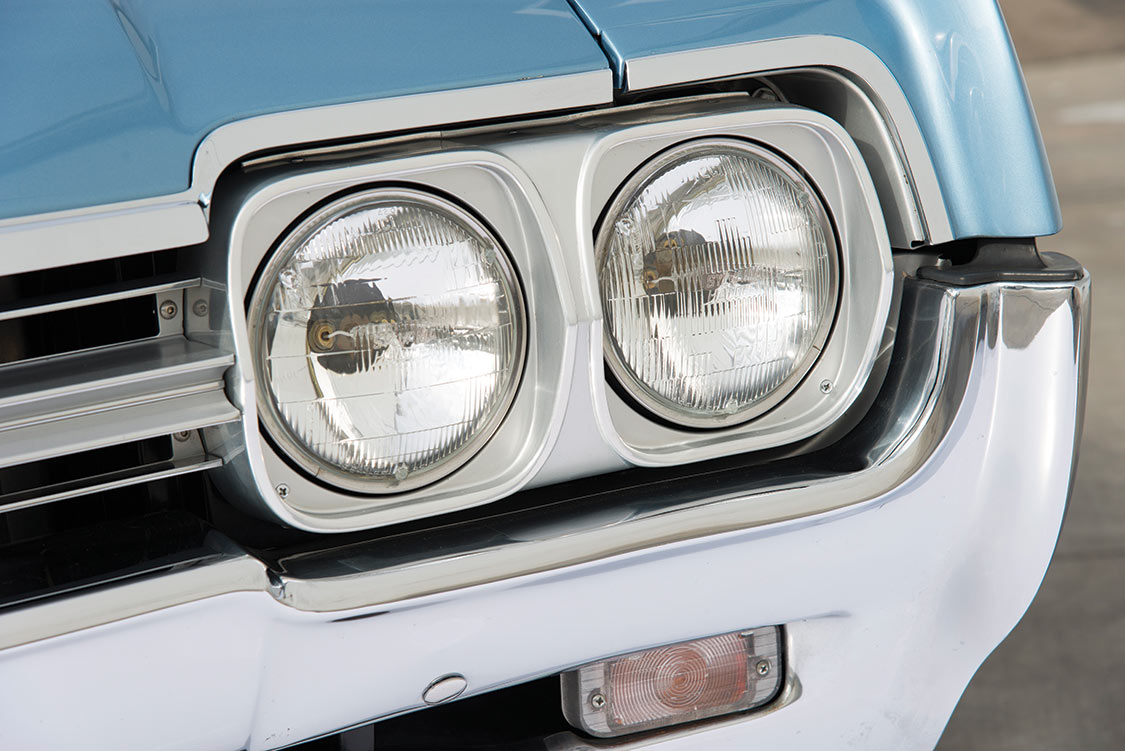
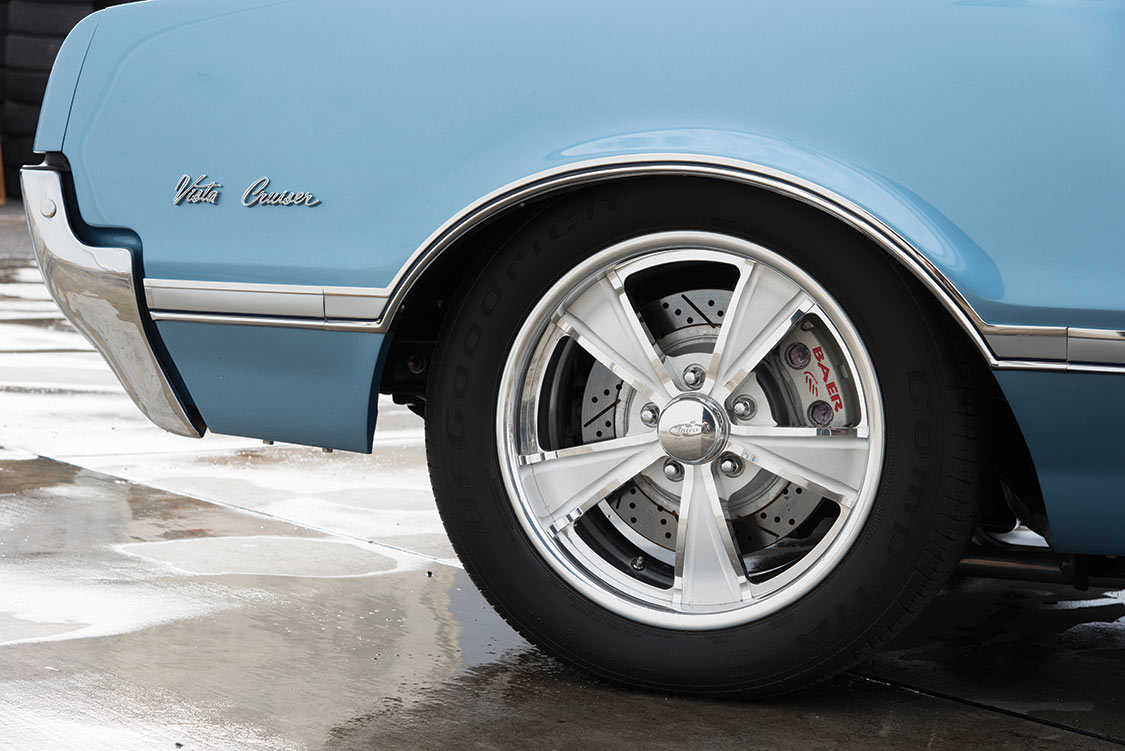
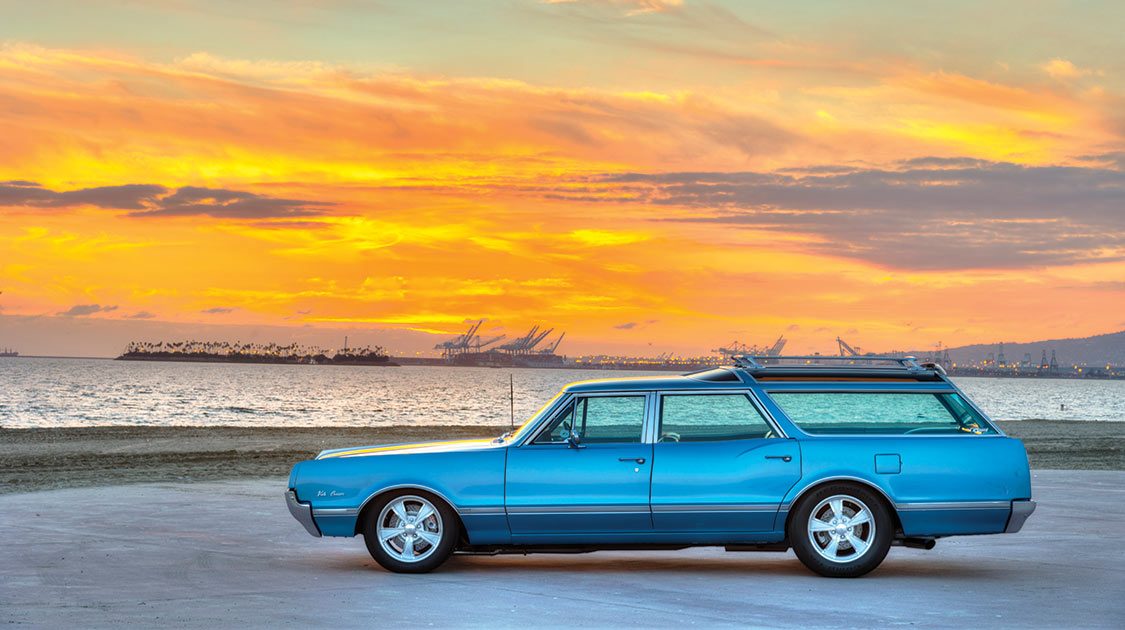
The correct wheel selection is always critical to a builder. Wheels need to create a visual delight while offering a highlight to the overall color and finish. Turnau wanted to capture the look and style of the original Hurst wheels offered in the mid-1960s, but desired a larger diameter for the right scale for the wagon. Intro ultimately allowed his vision to become a reality, and the Vista 17-in. wheel was born.
Asked about the color for the exterior, Turnau responded: “I knew that I wanted the Vista Cruiser to be a silvery color. I found a blue color close to what I wanted on the ‘mistake shelf’ at a paint supply shop. When I told them that I wanted something more silver, they handed me a squirt bottle of silver tint. I just kept squeezing the bottle and stirring it into the ‘mistake can’ until it became the color I was satisfied with.” Guinn gets credit for the paint, applied in 2000. Ron Mangus stitched the interior, after Turnau swapped the front bench seat for factory buckets and center console.
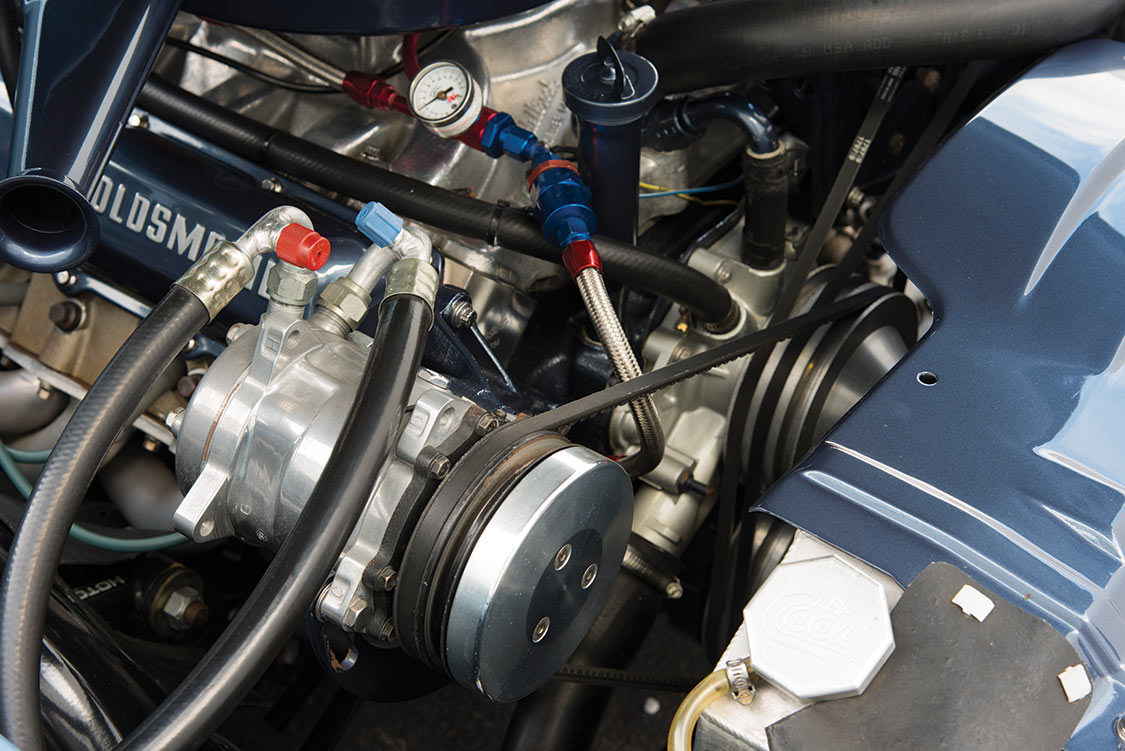
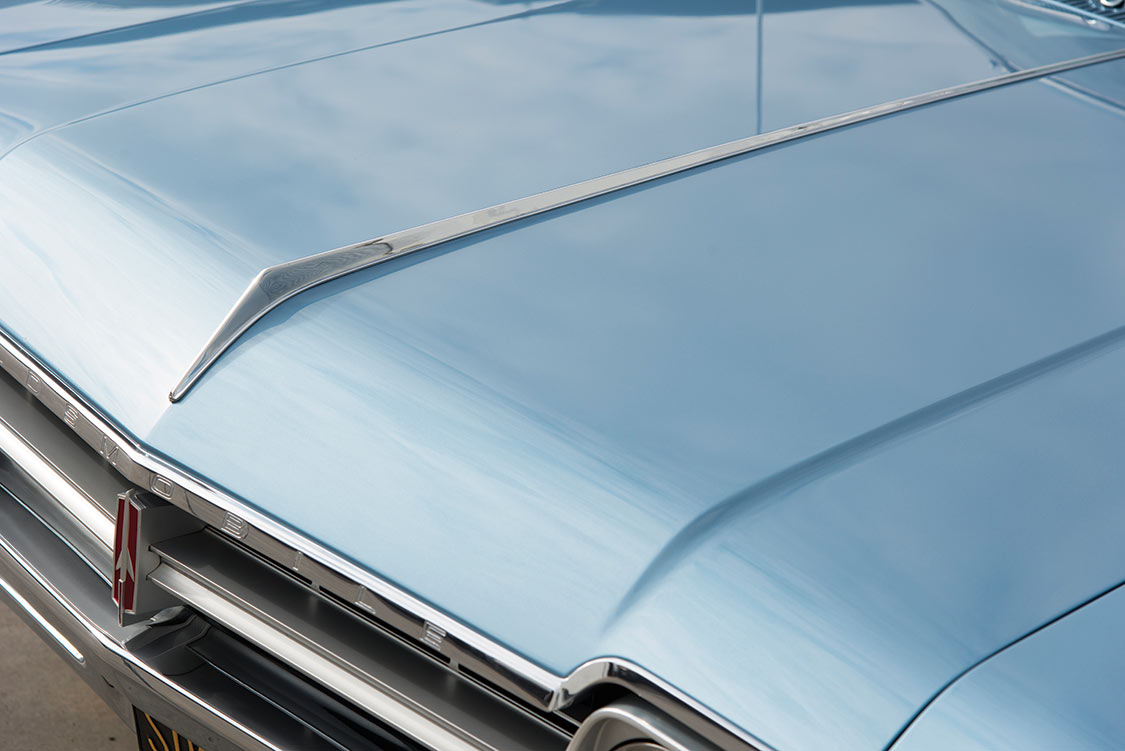
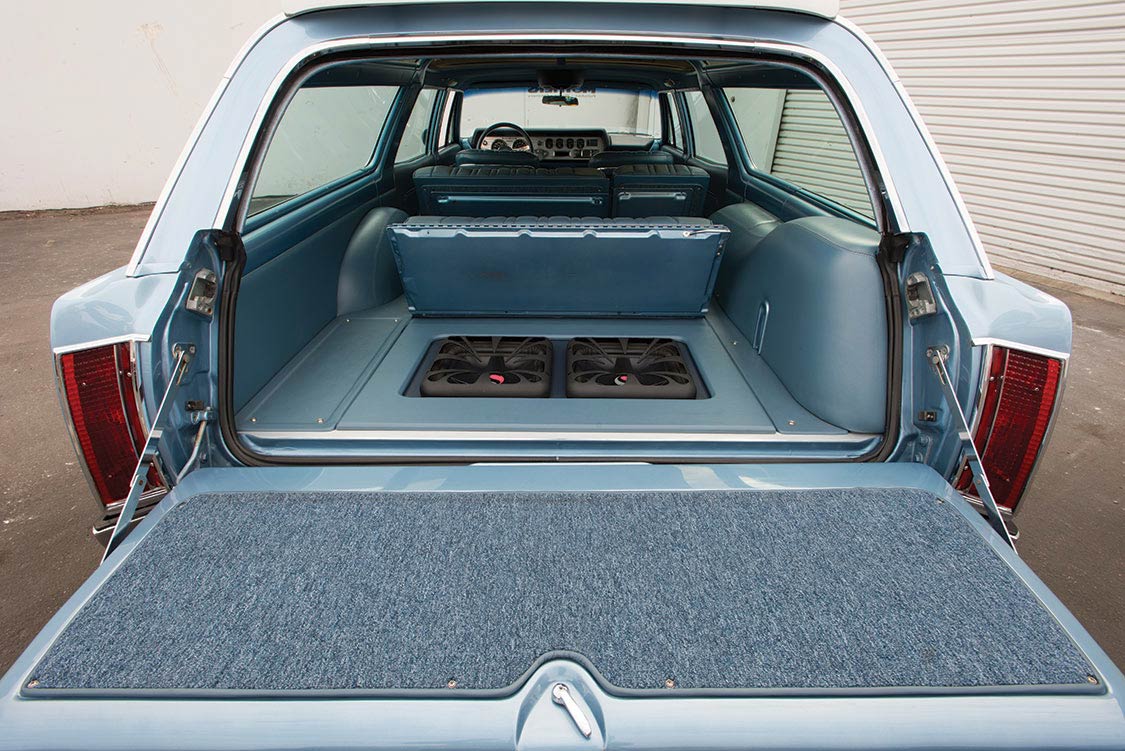
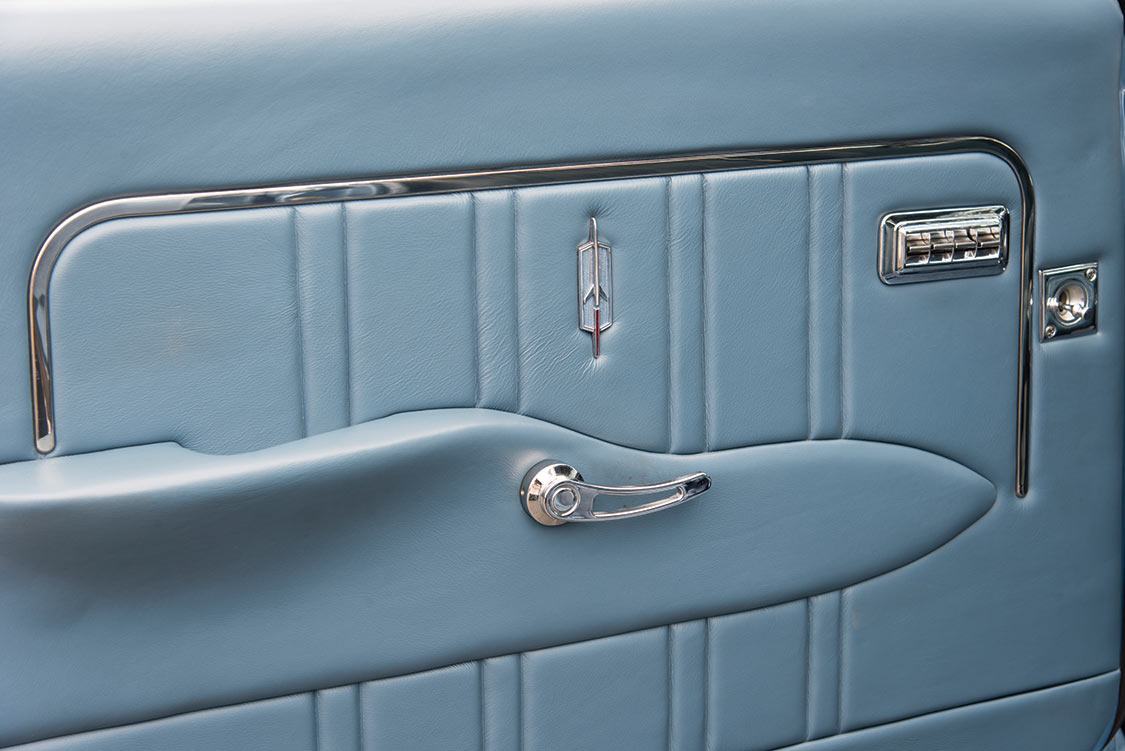
Not content to create a warehouse wagon, Turnau has logged the miles in his Vista Cruiser. It has seen the highways and byways from Mt. Clemens, Michigan, to San Bernardino, California. The wagon has cruised up to Hot August Nights in Reno, Nevada. He regularly drives it to the Donut Derelicts early Saturday gatherings. Perhaps it’s best summed up: Seeing or being seen in this Olds never gets old.

Share Link